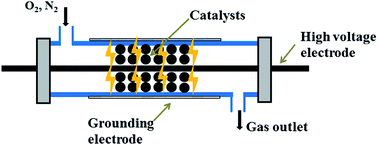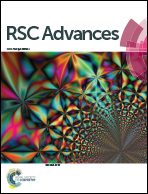Application of combined plasma-catalytic method for carbon particulate matter (PM) removal
Abstract
The carbon particulate matter (PM) generated by diesel engine emissions has attracted world-wide attention because it has a remarkable impact on air quality and the human body. Therefore, research on the removal of carbon PM has attracted increasing interest recently. Additionally, oxidative removal of carbon PM requires high temperature due to its high activation energy. In this research, a promising technology of nonthermal plasma (NTP) combined with catalytic oxidation is reported. The effective removal of carbon PM under NTP conditions by the synergy of combining plasma with MnOx/CeO2 catalysts at low temperatures was reported in this paper. The removal efficiency of carbon PM on MnOx/CeO2 catalysts (Mn loading 5.0 wt%) can be as high as 85.2% and 94.3% at 20 °C and 200 °C respectively, at the discharge power of 18.0 W and air flow rate of 30 mL min−1. Moderate reaction conditions with low temperature but high removal efficiency are the advantages of the decomposition of carbon PM in a dielectric barrier discharge (DBD) reactor. It is proposed that reactive oxygen species produced under NTP conditions are responsible for carbon PM converting into CO2. Furthermore, various parameters such as temperature, discharge power and air flow rate under NTP were investigated in the present paper, as well as the reaction process of NTP. Meanwhile, the MnOx/CeO2 catalysts were also characterized by XRD and TEM techniques.


 Please wait while we load your content...
Please wait while we load your content...